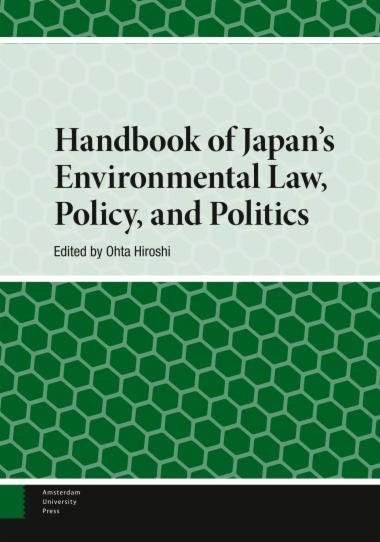This handbook offers an exposition of the contemporary status of Japan’s environmental law, policy, and politics. The compass of ecological quandaries explored within this tome is expansive, encompassing issues pertinent to both natural and synthetic ecosystems, natural resources, and inorganic materials. Each chapter’s temporal framework corresponds to the postwar period, following the enactment of environmental statutes and the initiation of administrative institutionalization, situated approximately in the early 1970s. The central inquiry addressed in this compendium pertains to the extent to which prevailing environmental statutes and policies have contributed to the enhancement or conservation of Japan’s natural and synthetic ecosystems, as well as the resilience of its natural resources. The authors within this volume undertake an analysis to discern the causal factors behind the quandaries by ascribing them to the existence or absence of enforceable regulations, public involvement in policy formulation processes, bureaucratic fragmentation, pioneering regulatory measures, institutional obstacles, regulatory co-optation, rational cost-effective methodologies, scientific understanding, scientific communities, ecological commerce, environmental non-governmental organizations (NGOs), and holistic ecological plans and programs. Moreover, pertinent sections raise an inquiry concerning Japan’s ecological diplomacy, inquiring whether Japan serves as a leader, bystander, or obstructionist.
- Cover
- Table of Contents
- Contributors
- Abbreviations
- Preface
- Introduction
- Part 1: The Environment and Development, Environmental Foreign Policy, and Environmental Governance
- 1 The Sustainable Development Goals and Japan
- Tarek Katramiz and Kanie Norichika
- 2 Japan’s Environmental ODA
- 3 Japan’s Law and Policy on Environmental Impact Assessment: Features of Current Legal Systems and Challenges in the Context of International Law
- Koyano Mari and Masuzawa Yoko
- 4 Public Participation in Environmental Matters in Japan
- 5 The Role of Japan’s Environmental NGOs in Environmental Governance
- Part 2: Natural Environmental Policies and Resources Management
- 6 Biodiversity Law and Policy in Japan
- 7 Japan’s Forest Policy
- Fujiwara Takashi and Mori Katsuhiko
- 8 Japan’s Fisheries Management Policy
- 9 Japan and Whaling
- 10 Japan and the Antarctic Ecosystem
- Part 3: Atmospheric Environmental Policies
- 11 Japan’s Air Pollution Policies and Diplomacy
- 12 Japan’s Policy on Stratospheric Ozone Depletion
- 13 Japan’s Climate Change Policy
- Part 4: Nuclear safety policy, disaster management, and industrial waste management
- 14 Post-3.11 Nuclear Safety Regulation
- 15 Fukushima Daiichi Nuclear Power Plant (1F) Decommissioning Governance and “Place of Dialogue”: Comparison with Three Mile Island Nuclear Power Plant, Unit 2 (TMI-2)
- 16 The Contested Governance of Japanese Industrial Wastes: Policy Disputes Embedded in Bureaucratic Sectionalism
- Part 5: Energy Transition, Subnational Environmental Policy and Diplomacy
- 17 The Energy Transition in Japan
- 18 From Smog to Climate Change: The Evolution of Tokyo Metropolitan Government’s Air Pollution Policies
- 19 The Role of Local Governments in Environmental Globalization
- Appendix 1: List of Treaties and Other Legally Binding International Instruments (in chronological order)
- Appendix 2: Chronology of Major Reforms in the Japanese Political System since the 1990s
- Index

